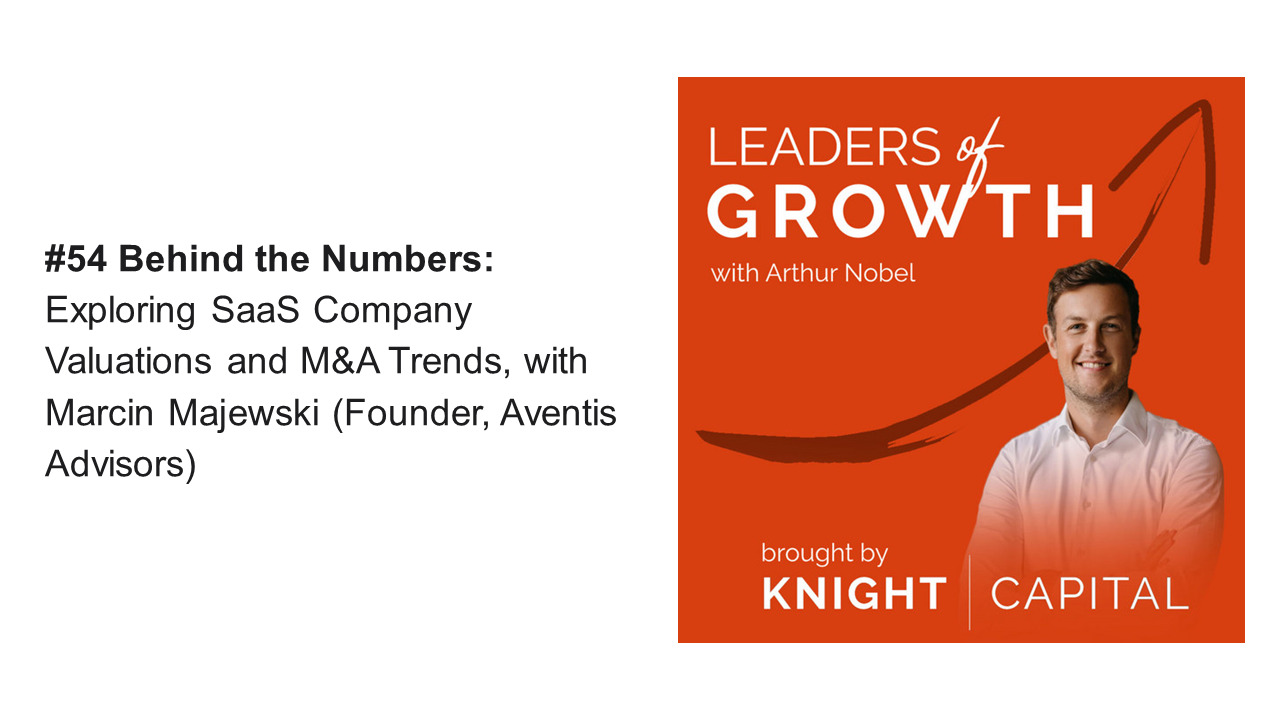So you’ve received an acquisition offer – the next step is to make sure you get the best deal possible.
An acquisition offer presents an important moment for any business owner. Unlike for the buyers, for many owners, this may be a singular event in their professional lives. Buyers often come armed with substantial experience, deep financial knowledge, and the practice of handling multiple acquisitions yearly. However, being prepared and informed can help level the playing field.
In this guide, we will demystify the M&A process by discussing some of the most common elements of the acquisition offer, typically referred to as Term Sheet, Letter of Intent (LOI), or Non-Binding Offer (NBO).
We will focus on the most key elements, including strategic rationale, valuation, transaction structure, and aspects of management and corporate governance.
By understanding these principal terms, you can ensure a thorough evaluation of the offer, contributing to a well-informed decision, a fair deal, and a satisfactory outcome.
Table of contents
3. Transaction structure: Stock vs. Asset purchase
4. Transaction structure: Payment terms
5. Transaction structure: Cash vs. Stock payment
6. Purchase price and valuation
Description of the Buyer
Understanding who the prospective buyer actually is a crucial first step in your acquisition journey. Buyers typically fall into two broad categories: strategic and financial.
Strategic buyers are usually companies in a similar industry or related field to yours. They are interested in acquiring your business because it complements their existing operations or growth strategy. The benefit they see might come from factors such as expanding customer base, enhancing product portfolio, leveraging technology, or growing their market share.
On the other hand, financial buyers, most commonly private equity firms, view your business as an investment opportunity. Their primary objective is to generate a favorable return on investment, often by improving operational efficiency or positioning the company for a profitable exit in the future.
Sometimes, a strategic buyer is being backed by a private equity firm in what is called a roll-up or buy-and-build strategy.
Understanding the buyer’s profile can help tailor your negotiation strategy and highlight the aspects of your business that align with their goals. Financial buyers tend to emphasize the importance of the founder or CEO staying on post-acquisition, given their intimate knowledge of the business and its operations.
What is the difference between a strategic and a financial buyer?
Strategic rationale
Don’t be put off by the jargon-filled strategic rationale section of the term sheet. This is where the buyer articulates their justification for acquiring your business. It provides insights into their motivations and the perceived value they believe your business will bring to their operations or portfolio.
It’s in your interest to fully understand their reasoning. Whether it’s gaining access to your customer base, integrating your proprietary technology, leveraging your market position, or absorbing your skilled employees, understanding these motivations can provide you with a tactical advantage.
This knowledge allows you to emphasize the relevant aspects of your business during the negotiation process, potentially increasing the perceived value and strengthening your bargaining position.
Transaction structure: Stock vs. Asset purchase
In an acquisition transaction, the deal structure could be specified as either an “asset deal” or a “stock deal.” Each of these approaches carries different implications.
Stock purchase
In a stock deal, the buyer purchases the company by acquiring 100% of its shares. This means they take over a complete business: assets, liabilities, and any potential hidden issues. This type of deal is often preferred by sellers, as it offers a clean break from the business.
Asset purchase
In an asset deal, the buyer purchases only selected assets of the company, allowing them to avoid assuming unwanted liabilities. The assets are transferred to a new entity, but the original owner company survives, just with less assets. For buyers, this offers the benefit of cherry-picking valuable assets and leaving behind any problematic aspects of the business.
Generally, share deals are simpler than asset deals, and the buyers select asset deals for two main reasons: avoiding hidden liabilities and beneficial taxation (depending on jurisdiction). In case, you are certain in lack of undisclosed liabilities and the taxation is identical, both types of deals are effectively the same.
Transaction structure: Payment terms
The payment terms outlined in a term sheet detail how the buyer plans to pay for the acquisition. Understanding these terms is critical for sellers, as they directly impact how much money you will receive from the transaction.
It is also the section, where there is most potential to create a win-win outcome for two parties. The most commonly used mechanism is an earn-out, which is a portion of the purchase price that is contingent on the target company reaching certain financial targets.
For the buyer, it reduces the upfront payment and provides a layer of protection by tying a portion of the cost to the future performance of the company. For the seller, it allows to capture the upside of the company’s future growth.
To make this work, both parties agree on the earn-out criteria— (a) financial metrics like revenue or EBITDA; (2) time period over which these targets should be achieved, typically ranging from one to three years.
As a seller, you should focus on a number of elements, when agreeing to an earn-out:
- Clearly defined performance metrics. Make sure you understand the financial metric used for earn-out calculations. While EBITDA is most closely correlated with company value, there are many ways to influence it with minor business or accounting decisions. This is why revenue, which is more difficult to manipulate is also commonly used.
- Maintaining control over result. If possible, you should try to maintain some control or influence over the business operations post-acquisition. This is because the company’s performance, which determines the earn-out payout, can be affected by changes in business strategy or operations. It is difficult to buyer to argue for an earn-out if they assume full control and you are leaving soon after the transaction.
Transparency and trust are key in these arrangements. The seller needs to trust that the buyer will manage the company in a way that enables reaching the set targets. Equally, the buyer needs to trust the seller’s projections of future performance.
Transaction structure: Cash vs. Stock payment
The most common method of payment is cash, and this is the one which is the best for the founders and least problematic.
Payment in stock (also called shares, equity) is most common in public markets when the acquiror is a public company with liquid stock. The current value of, for example, 10,000 shares of Apple is known, as well as the historical performance of the company and detailed financial information on the company. But even in such cases, taking payment in shares exposes the owner to risk of share price, especially taking into account the fact that the shares will have a lock-up clause, meaning that you can sell them on the open market only after certain time period (typically 180 or 360 days).
Payment in the stock of a private company is rather rare in M&A transactions. This option adds a few more uncertainties for the seller. It’s a bit like a guessing game since a private company doesn’t have to publicly disclose financials, making it tougher to figure out the value of your shares. And selling these shares? That’s a whole different challenge since there’s no open market for them. So, you’d need to really dig into the company’s financial health, growth potential, and exit plans before taking the deal.
Purchase price and Valuation
This is one of the most important areas of any term sheet and also the one with the most caveats, especially for non-professionals.
Valuation multiples
The approach to defining the purchase price in the term sheet can greatly affect the final amount you receive. Two common methods are a fixed price or a valuation based on multiples.
A fixed price is straightforward – it’s an agreed-upon amount that won’t change. However, it doesn’t account for changes in business performance between the time the term sheet is signed and the deal closes.
On the other hand, a valuation based on financial multiples – such as EBITDA, revenue, or net income – can provide more flexibility. This approach adjusts the price based on your company’s most recent financials, which are typically assessed closer to the closing date.
While a fixed price provides certainty, using multiples could lead to a higher or lower final price depending on the company’s performance.
How to use multiples for valuation?
Enterprise Value (EV) / “Cash-free, debt-free”
The purchase price in a term sheet is typically quoted on the basis of Enterprise Value. In financial jargon, Enterprise Value is the value of the pure enterprise, without taking in to account its debts or how much cash it accumulated throughout the years. This method allows for comparison of businesses with different debt and cash levels.
In term sheets, it is usually written as “cash-free, debt-free”. When am M&A deal is described as “cash-free, debt-free”, it means that the buyer is offering a price that assumes the business will be handed over without any cash or debt in its balance sheet. Any cash left in the business would typically increase the final purchase price, while any debt would decrease it.
What that means is that the purchase price paid to target company shareholders (known as Equity Value) will actually be calculated as follows:
The reasons for this formula are as follows:
- If you have accumulated the significant amount of cash and never paid dividends over the years, the Buyer should pay for this cash dollar-for-dollar if it remains in the business at closing date
- If you have significant financial debt (loans, leases, etc.), the Buyer will repay them for you, only if the purchase price is reduced dollar-for-dollar
Normalized level of working capital
The term sheet you have received may include the wording, such as “adjusted to a normalized level of working capital at closing”. Net working capital is the difference between current assets and current liabilities. It especially relevant for manufacturing and trading businesses, which can have large and fluctuating levels of inventory and receivables.
When defining deal terms in an M&A Letter of Intent (LOI), it’s common practice to agree on a ‘normalized’ level of net working capital that the business will need to maintain up until the transaction’s closing.
This clause is tied to the fact that the buyer is essentially purchasing the company’s cash at the time the deal is sealed. To make things clear, let’s consider an example. Suppose one of your large customers, who usually pays on time, is late with a payment of $1 million that is due before the closing of the deal. As a result, your company’s cash balance is smaller at the time of closing. Yet, because your net working capital is larger than ‘normal’, you will receive $1 million more from NWC adjustment.
Management team
The ‘Management Team’ section of a Letter of Intent (LOI) focuses on the future of the company’s leadership post-acquisition. This part of the document is especially significant for buyers interested in the ongoing contribution of the current management team, which often carries substantial value in terms of company-specific knowledge, established customer relations, and industry expertise.
In this section, the buyer outlines their intentions for the existing management team after the M&A. This could involve the retention of the current management, changes in roles, or even the introduction of new team members.
It may also discuss matters related to employment agreement, incentive plans, non-compete clauses, and succession planning. These details are key as they have direct implications on the company’s strategic direction and the key employees motivation and commitment post-acquisition.
Clearly outlining the future of the management team in the LOI ensures that both parties have a mutual understanding about the roles and expectations, preventing potential misunderstandings down the line.
—
Interpreting and negotiating a term sheet in M&A isn’t a one-time act, but rather an iterative process, punctuated by questions and clarifications. It’s crucial to remember that any missing sections in the term sheet can, and should, be requested to be included in writing before moving forward. Even though term sheets are not legally binding, they usually set the tone and trajectory for the transaction ahead.
Feel free to reach out to us for a complimentary review of the acquisition offer you’ve received. You’re not obliged to share the buyer’s identity, but we can still offer you strategic advice on valuation, negotiations, and subsequent steps.
Why you need an M&A Advisor when selling your business
An acquisition offer represents a pivotal moment in any business owner’s journey. For many founders, this may be a singular event in their professional life. M&A advisors bring specialized expertise to ensure you get the best deal, handling valuation, market dynamics, and deal structure. They focus on the details while you run your business, advocating for your interests and influencing the final sale price. With their deep knowledge and sector expertise, M&A advisors help ensure a fair, well-informed decision.
About Aventis Advisors
Aventis Advisors is an M&A advisor for technology and growth companies. We believe the world would be better off with fewer (but better quality) M&A deals done at the right moment for the company and its owners. Our goal is to provide honest, insight-driven advice, clearly laying out all the options for our clients – including the one to keep the status quo.
Get in touch with us to discuss how much your business could be worth and how the process looks.




